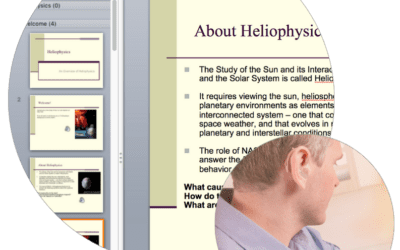What is the impact of House Bill 21-1110 on eLearning content, particularly eLearning provided by state and local government entities?
House Bill 21-1110 (HB21-1110) in Colorado has specific implications for accessible eLearning, particularly for eLearning provided by state and local government entities. The bill’s focus on digital accessibility means that all digital content, including eLearning materials, must be accessible to individuals with disabilities. Here are some key impacts on accessible eLearning content:
Accessible eLearning Content Standards Compliance
Accessible eLearning must comply with the Web Content Accessibility Guidelines (WCAG) 2.1 Level AA, as adopted by the Colorado Office of Information Technology (OIT). This includes ensuring that eLearning platforms and materials are perceivable, operable, understandable, and robust for all users, including those with disabilities.
Inclusive Design
eLearning content creators will need to incorporate inclusive design principles from the outset. This involves designing courses that accommodate users with a variety of disabilities, such as visual, auditory, physical, speech, cognitive, language, learning, and neurological disabilities. For example, videos should include captions and transcripts, and interactive elements should be navigable using keyboard commands for those who cannot use a mouse.
Regular Audits and Updates
To ensure ongoing compliance, accessible eLearning platforms and content may need to undergo regular audits and updates. This ensures that new content or updates to digital platforms do not introduce accessibility barriers.
Training and Awareness
There will likely be an increased need for training and awareness among those involved in creating and managing accessible eLearning. Understanding the requirements of WCAG 2.1 Level AA and how to implement them in eLearning scenarios will be crucial.
Legal and Financial Implications
Non-compliance with HB21-1110 could lead to legal challenges, including civil rights violations for discrimination against individuals with disabilities. This could result in injunctions to correct non-compliant eLearning materials and potentially monetary damages and legal costs.
Enhanced User Experience in Accessible eLearning Content
While the primary goal of these regulations is to ensure accessibility for users with disabilities, these changes often result in an improved user experience for all users. For example, clear navigation and the availability of transcripts can benefit all learners, not just those with specific accessibility needs.
Potential for Broader Adoption
While HB21-1110 specifically targets state and local government entities, its standards could influence private sector eLearning providers within Colorado and beyond, as they seek to ensure inclusivity and potentially align with public sector practices.
Overall, HB21-1110 pushes for a more inclusive digital environment in Colorado, which includes making accessible eLearning content available to all learners, thereby ensuring equal opportunities for education and professional development.





